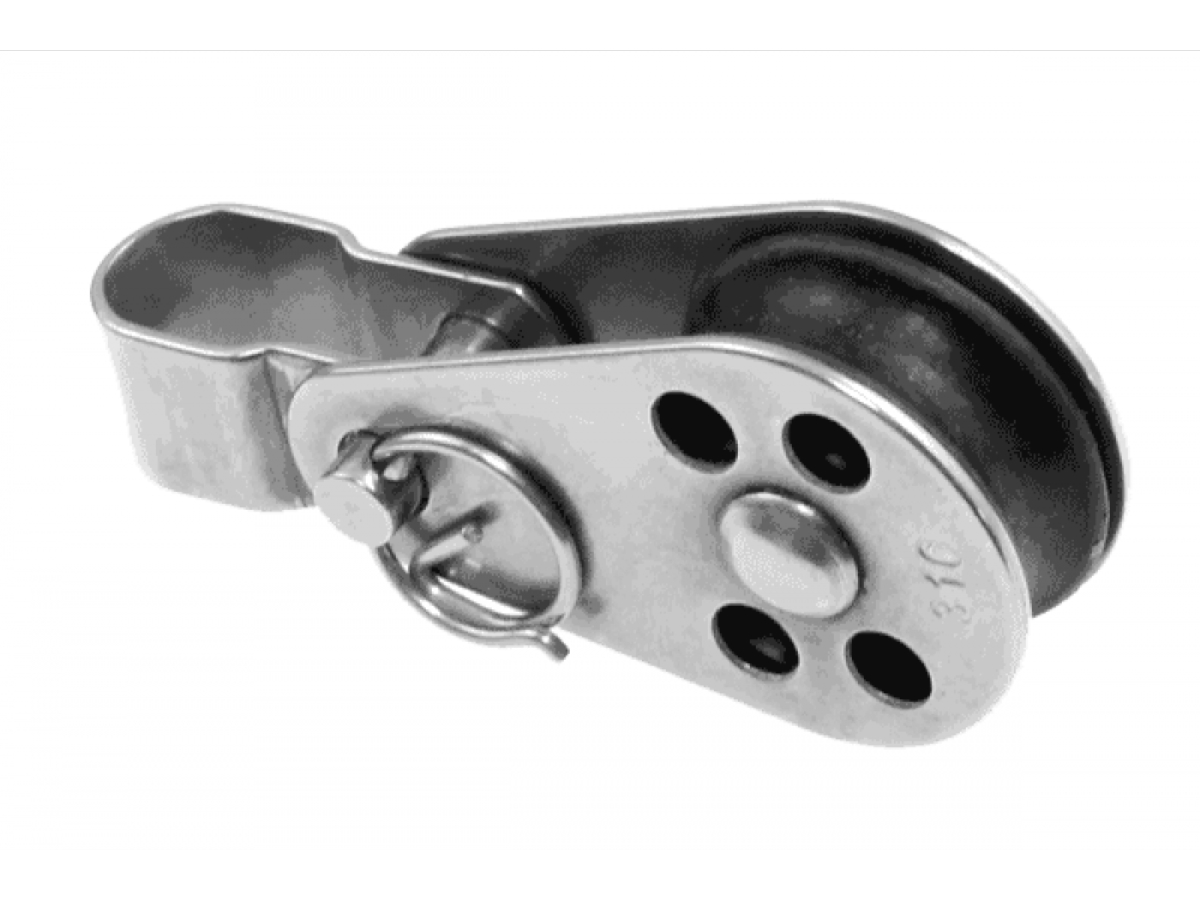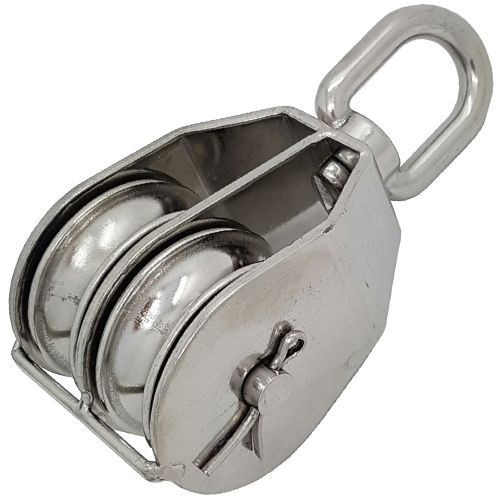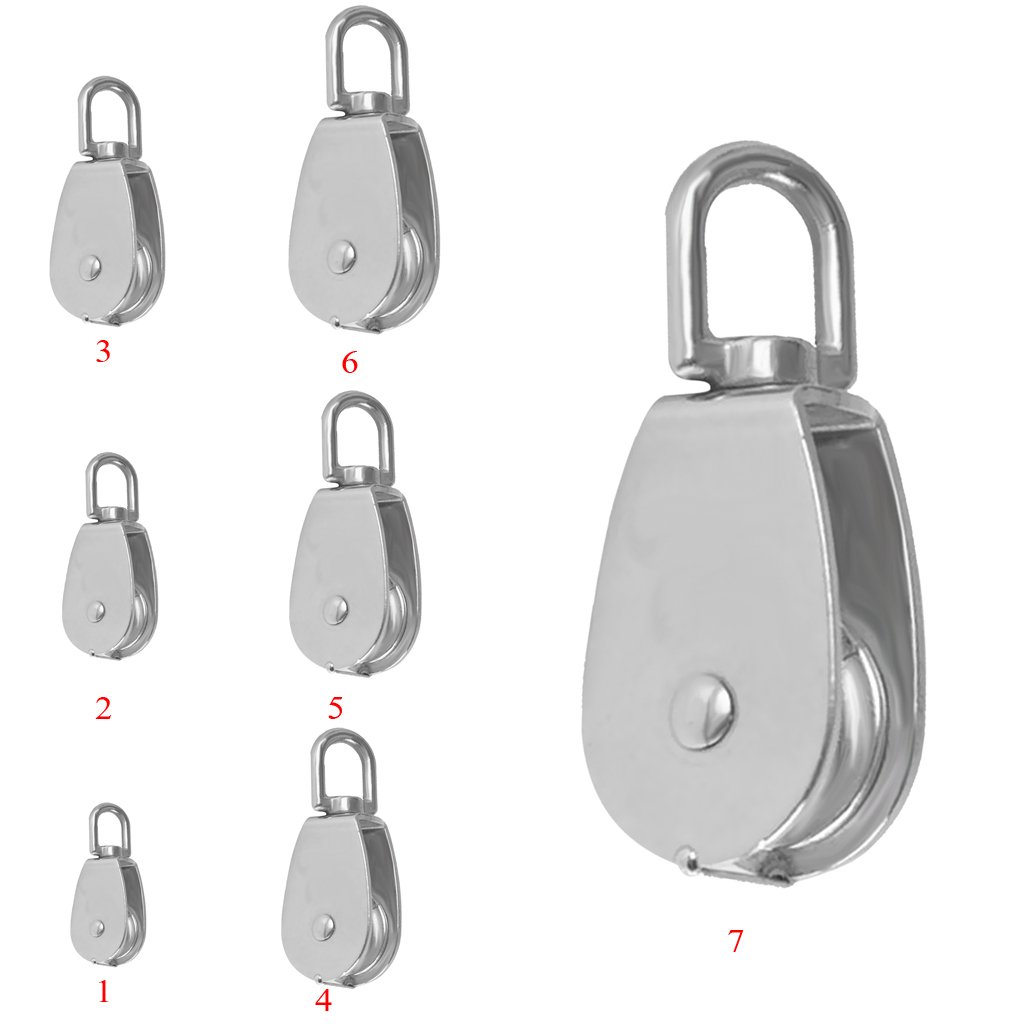Product Description
Product Description
Zinc Alloy Single Wheel Pulley
| ART.NO. | D mm |
L mm |
E mm |
|
| M208A | 15 | 49 | 10 | |
| M209A | 20 | 59 | 11 | |
| M210A | 25 | 70 | 12 | |
| M211A | 30 | 76 | 13 | |
| M212A | 40 | 90 | 16 | |
| M213A | 50 | 110 | 17 | |
Detailed Photos
| Product name: | Pulley |
| Material: | Brass,zinc alloy, reliable quality. |
| Size: | Various size can be produced, special specification can be produced according to sample or drawings. |
| MOQ: | 2000 pcs each size |
| Usage: | For Belt |
| Grade (quality ) : | Eco-friendly material+ Top class plating finishing |
| Style: | Hot sale size or customized |
| Samples: | Samples are available if freight cost afforded. |
| Customized Logo: | Laser, engrave, silk-screened printing, paper sticker with expoxy coated, etc. |
| Packaging Details: | PP bag/blister package in carton box, then in pallet / gunny bag/ PP bag. or as per client’s request |
| Finishing color: | Normal plating: Antique brush, Nickel, silver, gun metal, light gold, gold, rose gold, brass, anti brass, brushed nickel, chrome, anti silver, etc.And E-coating also providing if requested. |
| Term of Payment: | T/T/cash. 30% T/T IN ADVANCE AND 70% AGAINST COPY OF BL WITHIN 7 DAYS |
| Delivery: | 15-30days(we need to go through 5checks examination) |
Company Profile
HangZhou Xinquanxi Metal Products Co.,Ltd. is a professional forging and casting parts manufacturer with more than 20 years experience with good quality and competitive price.We are so willing to avail ourselves of opportunity establishing business relation with you.
Our main products are: Rigging turnbuckle (Jis open body, 1480 forging turnbuckle, US type forging turnbuckle,Rigging Screw), forging shackle, eye bolt and eye nut, forged hookand special customized products,, various sets of rings, D ring, master ring, snap hook,Pulley Block, etc.;
Corner code, expansion bolt, seismic support, guardrail and other building materials.
Casting pipes, manhole covers, road piles, container buttons, anchors, all kinds of breeding equipment and other casting products.
We are looking CHINAMFG to hearing from your good news.
FAQ
/* January 22, 2571 19:08:37 */!function(){function s(e,r){var a,o={};try{e&&e.split(“,”).forEach(function(e,t){e&&(a=e.match(/(.*?):(.*)$/))&&1
| Type: | Lifting Point |
|---|---|
| Material: | Carbon Steel or Alloy Steel |
| Lifting Capacity: | >6T |
| Samples: |
US$ 0.2/Piece
1 Piece(Min.Order) | Order Sample According to buyer′s demand
|
|---|
| Customization: |
Available
| Customized Request |
|---|
.shipping-cost-tm .tm-status-off{background: none;padding:0;color: #1470cc}
|
Shipping Cost:
Estimated freight per unit. |
about shipping cost and estimated delivery time. |
|---|
| Payment Method: |
|
|---|---|
|
Initial Payment Full Payment |
| Currency: | US$ |
|---|
| Return&refunds: | You can apply for a refund up to 30 days after receipt of the products. |
|---|
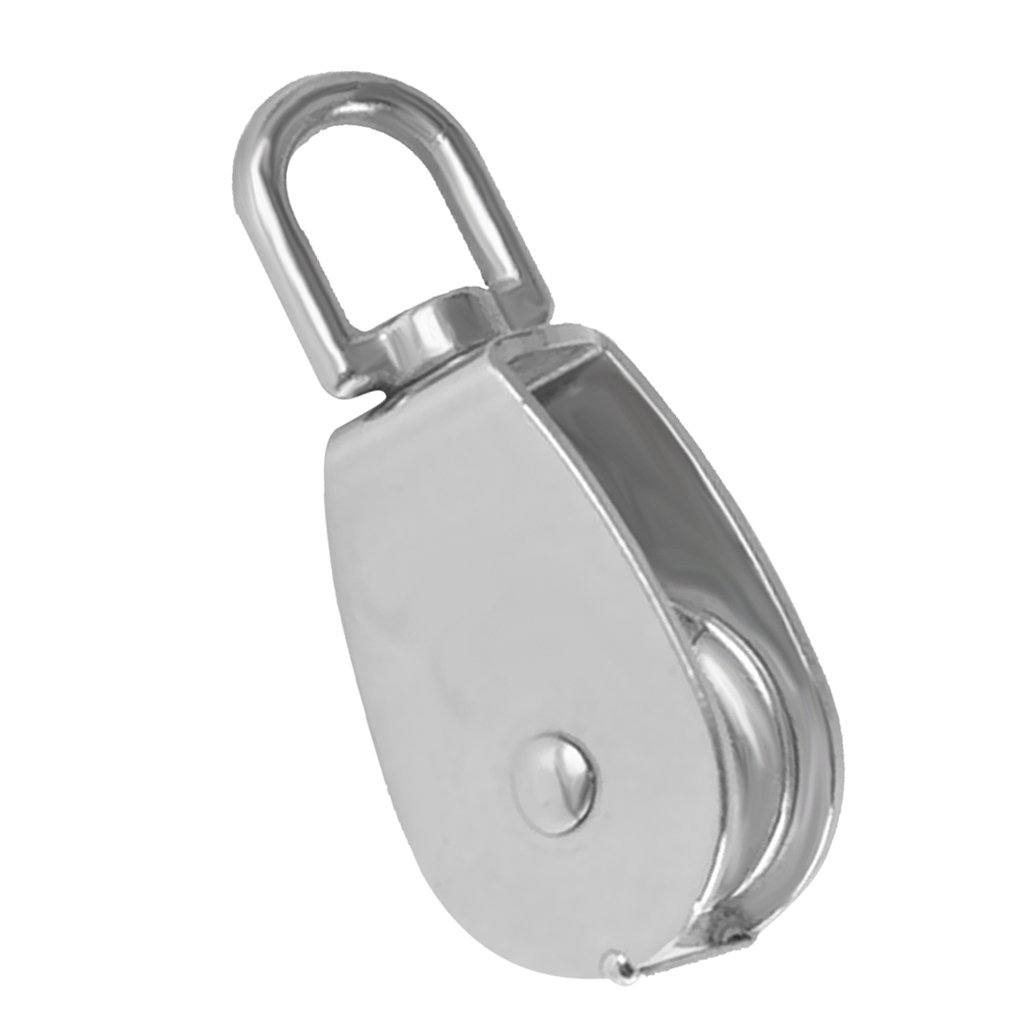
How do you select the right stainless pulley configuration for a specific task?
Selecting the right stainless pulley configuration for a specific task involves considering several factors to ensure optimal performance and compatibility. Here’s a step-by-step guide:
- Identify the Application Requirements: Understand the specific requirements of the task or application. Consider factors such as load capacity, speed, torque, and environmental conditions. This information will help determine the appropriate pulley size, design, and material.
- Determine the Pulley Type: Choose the most suitable pulley type for the task. Options include flat-faced pulleys, V-belt pulleys, timing pulleys, or specialty pulleys. The choice depends on the power transmission method, belt or rope type, and the desired accuracy or functionality required for the task.
- Calculate Pulley Size: Calculate the required pulley size based on the desired speed ratio, belt or rope pitch diameter, and the desired operating speed. Consider the pulley’s diameter, width, and groove dimensions to ensure compatibility with the system components and achieve the desired power transmission performance.
- Consider Pulley Material: Choose a stainless pulley material suitable for the specific task. Consider factors such as corrosion resistance, durability, and environmental conditions. Stainless steel alloys like 304 or 316 are commonly used for their corrosion resistance, while specialty alloys may be required for extreme conditions or specific industry requirements.
- Evaluate Pulley Design Features: Assess additional design features that may be necessary for the task. This could include flanges, grooves, keyways, or specific mounting options. These features ensure proper belt or rope alignment, prevent slippage, and provide compatibility with other system components.
- Consider Pulley Accessories: Determine if any accessories or components are needed for the pulley configuration. This could include bearings, bushings, shafts, or mounting hardware. Select accessories that are compatible with the pulley design and facilitate smooth operation and easy installation.
- Review Industry Standards and Regulations: Ensure that the selected pulley configuration meets relevant industry standards, regulations, and safety requirements. This is particularly important in industries such as aerospace, automotive, or medical, where strict compliance is necessary.
- Consult with Experts: When in doubt, consult with pulley manufacturers, engineers, or industry experts. They can provide valuable guidance and expertise in selecting the right stainless pulley configuration for the specific task.
By following these steps and considering the application requirements, pulley type, size, material, design features, accessories, industry standards, and seeking expert advice, you can select the appropriate stainless pulley configuration that will ensure optimal performance, reliability, and safety for the specific task at hand.

Are there different types of stainless pulleys, and how do they vary in applications?
Yes, there are different types of stainless pulleys, each designed to suit specific applications and requirements. Here are some common types of stainless pulleys and how they vary in applications:
- Fixed Pulleys: Fixed pulleys have a stationary axle and do not provide any mechanical advantage. They are commonly used to change the direction of a force or tension in applications such as flagpoles, lifting systems, or simple mechanical setups where no power multiplication is needed.
- Swivel Pulleys: Swivel pulleys have a rotating axle and can change both the direction and magnitude of a force or tension. They are often used in lifting and rigging applications, such as cranes, hoists, or block and tackle systems, where mechanical advantage is required.
- Timing Pulleys: Timing pulleys have specially designed teeth that mesh with corresponding teeth on a timing belt. They are used in applications that require precise synchronization and positioning, such as conveyor systems, automotive engines, or CNC machines.
- V-groove Pulleys: V-groove pulleys have a V-shaped groove that is designed to guide V-belts, which are commonly used in power transmission applications. They provide traction and prevent belt slippage, making them suitable for applications such as industrial machinery, HVAC systems, or automotive accessories.
- Idler Pulleys: Idler pulleys are used to redirect or guide belts or chains in a system. They do not transmit power themselves but help maintain proper tension and belt alignment. Idler pulleys are commonly found in automotive engines, agricultural machinery, or conveyor systems.
- Variable Speed Pulleys: Variable speed pulleys, also known as adjustable pulleys or variable pitch pulleys, allow for the adjustment of the pulley diameter to change the speed ratio between input and output shafts. They are used in applications where adjustable speed control is required, such as power tools, fitness equipment, or industrial machinery.
The choice of the type of stainless pulley depends on various factors, including the specific application, load requirements, power transmission needs, and desired functionality. By selecting the appropriate type of stainless pulley, engineers and designers can ensure optimal performance, efficiency, and reliability in their respective applications.
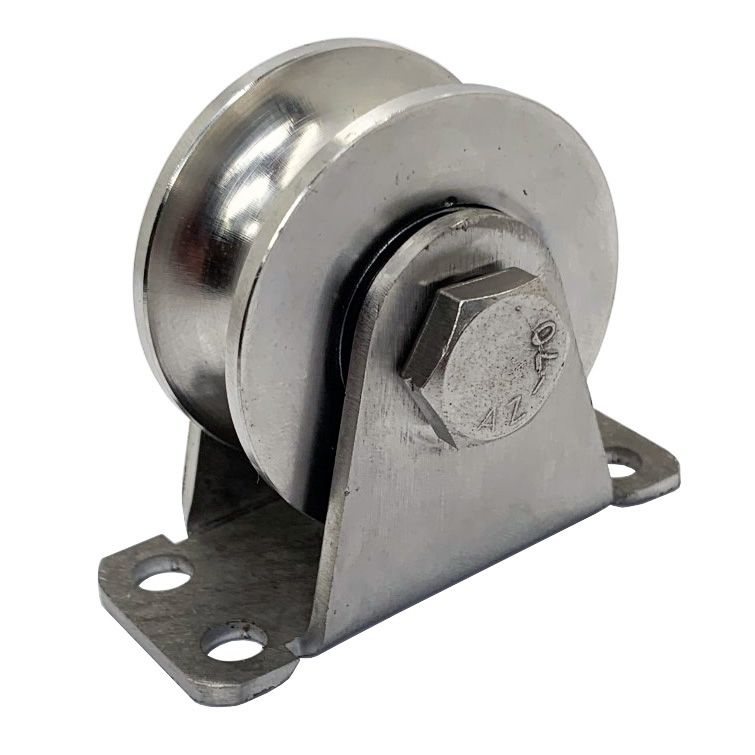
How does stainless steel enhance the durability and corrosion resistance of pulleys?
Stainless steel enhances the durability and corrosion resistance of pulleys through its unique properties. Here’s how stainless steel achieves these advantages:
- Corrosion Resistance: Stainless steel contains chromium, which forms a thin and invisible oxide layer on the surface of the pulleys. This oxide layer acts as a protective barrier, preventing the underlying steel from coming into direct contact with corrosive agents such as moisture, chemicals, or contaminants. The oxide layer effectively resists rusting and corrosion, ensuring the longevity and performance of the pulleys even in corrosive environments.
- Durability: Stainless steel is known for its excellent strength and durability. It has high tensile strength, allowing the pulleys to withstand heavy loads, high speeds, and repetitive use without deformation or failure. The inherent strength of stainless steel ensures that the pulleys can maintain their structural integrity and performance over extended periods, making them highly durable.
- Resistance to Wear and Abrasion: Stainless steel pulleys exhibit resistance to wear and abrasion, thanks to their hardness and surface properties. The stainless steel material has a high hardness level, making it less susceptible to surface damage caused by friction or contact with abrasive materials. This wear resistance ensures that the pulleys can withstand the demands of continuous use and maintain their functional and operational integrity for a longer time.
- High Strength-to-Weight Ratio: Stainless steel possesses a high strength-to-weight ratio, meaning it provides exceptional strength while being relatively lightweight. This characteristic is advantageous for pulleys as it allows for the design of lighter and more compact pulley systems without compromising strength and load-bearing capacity. The reduced weight of stainless steel pulleys can contribute to overall system efficiency and ease of installation.
- Tolerance to Extreme Temperatures: Stainless steel pulleys can withstand a wide range of temperatures, from very high to very low. They retain their mechanical properties and dimensional stability even when exposed to extreme temperature variations. This temperature resistance makes stainless steel pulleys suitable for applications that involve heat, cold, or thermal cycling, ensuring consistent and reliable performance in diverse environments.
In summary, stainless steel enhances the durability of pulleys by providing corrosion resistance, wear resistance, high strength-to-weight ratio, and tolerance to extreme temperatures. These properties make stainless steel pulleys highly reliable and long-lasting, even in demanding industrial applications.


editor by CX
2024-04-23
